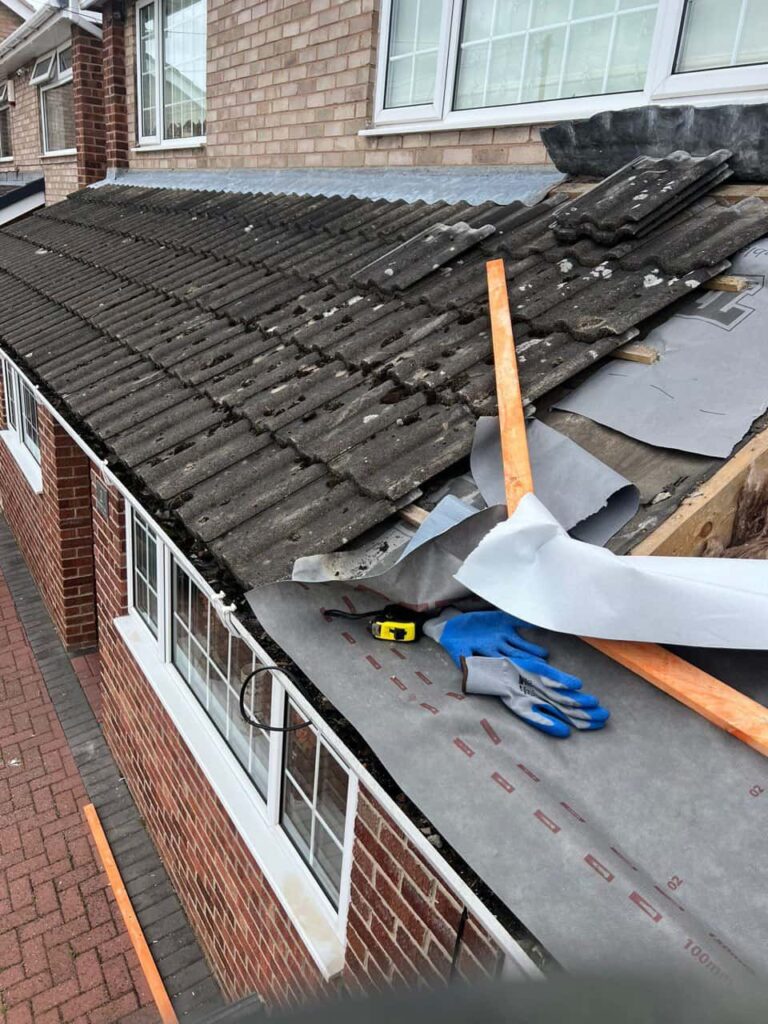Severe weather can strike at any time, and your roof is the first line of defence protecting your home from the elements. High winds, heavy rain, and flying debris can all leave behind damage that is not always immediately visible. Responding quickly and correctly to storm damage can prevent costly repairs and keep your property safe.
At TRP Roofing Kingswood, we help homeowners across Kingswood and the East Riding of Yorkshire assess, repair, and maintain storm-damaged roofs. Here’s a complete guide to understanding the process from inspection to repair.
Step 1: Initial Roof Assessment After a Storm
After a major storm, the first priority is safety. Avoid climbing onto the roof yourself—loose tiles and slippery surfaces can be dangerous. Instead, carry out a ground-level check and look for signs such as:
- Missing or displaced tiles or slates
- Debris like branches on the roof or in gutters
- Damaged flashing around chimneys or roof edges
- Water stains or damp patches inside the loft or ceilings
Documenting visible damage with photos can be useful for both insurance and repair planning.
Step 2: Professional Roof Inspection
Even if damage appears minor, a professional inspection is essential. Storms can cause hidden problems that worsen over time, including:
- Hairline cracks in tiles that lead to future leaks
- Lifted underlay or felt beneath roof coverings
- Loosened ridge or hip tiles that may fall in future winds
- Compromised roof timbers due to water ingress
At TRP Roofing Kingswood, our trained team performs a thorough inspection to identify both obvious and hidden damage, ensuring nothing is overlooked.
Step 3: Temporary Measures to Prevent Further Damage
If immediate repair is not possible, temporary solutions can protect your home from further water ingress. These may include:
- Emergency tarpaulin coverings
- Temporary tile replacement or patching
- Clearing blocked gutters and downpipes to aid drainage
Quick action at this stage can save you from more extensive internal damage while permanent repairs are arranged.
Step 4: Planning and Executing Repairs
Once the inspection is complete, a professional roofer will provide a repair plan based on the type and extent of the damage. Common storm-damage repairs include:
- Replacing missing or broken tiles and slates
- Securing or re-bedding ridge and hip tiles
- Repairing or replacing damaged lead flashing
- Resealing or reinforcing flat roof membranes
All repairs should be completed using durable, weather-resistant materials to restore your roof’s full protective function.
Step 5: Preventative Measures for Future Storms
Repairing the roof is only part of the solution. Implementing preventative measures ensures your home is better prepared for the next storm:
- Scheduling regular roof inspections to spot early wear and tear
- Keeping gutters and roof valleys clear of debris
- Addressing minor repairs promptly to prevent cumulative damage
- Considering roof strengthening options for exposed properties
By adopting a proactive maintenance routine, homeowners can significantly reduce the risk of future storm-related issues.
Conclusion
Storm damage can compromise your home quickly, but a structured approach—from initial inspection to professional repair—ensures your roof is restored efficiently and safely. Acting promptly not only protects your property but also minimises long-term costs and disruption.
If your home in Kingswood or the surrounding East Riding of Yorkshire area has been affected by storm damage, contact TRP Roofing Kingswood today. Our expert team will carry out a thorough inspection, provide tailored repairs, and help keep your roof resilient against future storms.
Call us on: 01482 420 395
Click here to find out more about TRP Roofing Kingswood
Click here to complete our contact form and see how we can help with your roofing needs.

